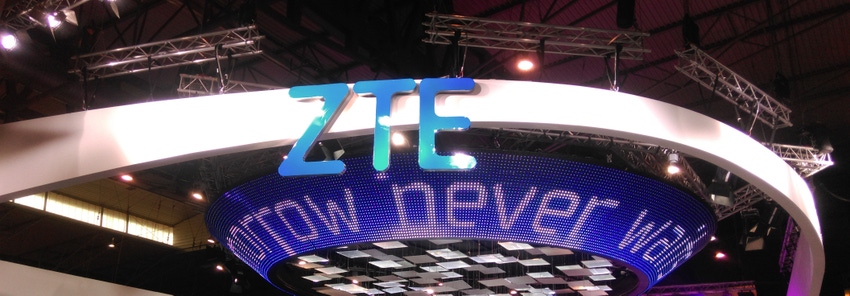While the success of Chinese businesses has challenged the status quo in certain segments, ZTE’s latest development shows dominance from the East is far from a given.
January 9, 2017

While the success of Chinese businesses has challenged the status quo in certain segments, ZTE’s latest development shows dominance from the East is far from a given.
According to Reuters, ZTE will shed around 3,000 positions over the course of Q1, roughly 5% of the global workforce, including 20% of those in its domestic handset business where is has been losing market share. While the declining smartphone business may grab headlines, perhaps a more significant impact is the uncertainty of its place in the US market.
ZTE is one of the few Chinese vendors with a stable foothold in the US market, though this has come under question in recent months following the threat of trade sanctions. Back in March, the US Commerce Department announced it would impose a ban on US exports to ZTE as it allegedly broke US rules on trade with Iran. The ban has yet to come into effect following a number of reprieves, the last of which expires at the end of February, though the ripples of the threat to disrupt ZTE’s supply chain does seem to making an impact.
Although ZTE is yet to confirm the move, its Chairman Zhao Zianming is reported to have told employees in the New Year message the company has “encountered its biggest crisis in its 31-year history”, and the team plan to shut down underperforming business units to concentrate investments.
Alongside this slightly pessimistic message from Zhao, Reuters also claims to have spoken to sources who have been given a quota of redundancies to make over the course of the coming months, as well as a list of specific employees to axe. One manager said “I was also given names that must go because they had tried to apply for jobs at Huawei and are therefore branded as ‘unstable factors’”, making it difficult to offer any sympathy to the struggling ZTE management team.
In all honesty, the entire networking segment is in a big of a tricky position. The euphoria of 4G which has fueled growth over recent years is starting to slow, and 5G is realistically a couple of years away. Sales figures will be hit and it will be an uncomfortable time for some.
While it does now find itself in a slight dubious position, ZTE’s performance has been slightly encouraging over the course of 2016. Unlike its European rivals in the networking segment, the company demonstrated growth over the first three quarters, with a 4.4% lift in sales, though the success is drowned in the Huawei tidal wave.
In contrast to the struggles of ZTE, Huawei has had another year of tremendous growth, reporting a 32% year-on-year increase in 2016, though its own CEO gave a downbeat message to employees last week. Eric Xu’s New Year’s message was hardly a cheerful one as he cited political and economic uncertainty as causes for belt-tightening from the giant over the next 12 months, including in what it describes as ‘empty and extravagant marketing events and conferences’. Check out Light Reading’s take on the announcement here.
The team may identify such marketing exercises as a drain on resources, though it does partly explain the successful international expansion. The success of Huawei can be mostly attributed to three areas; disruptive pricing strategies, innovative products and wide-sweeping marketing. Like many challenger brands from the far East, Huawei put in place pricing strategies which essentially undercut more established competitors.
This strategy also coincided with the team releasing a number of new, innovative products, which is usually unheard of for a brand which undercuts competitors; innovation and cheaper, who would have thought it.
Alongside the more technical side of the business, the Huawei team also kicked off an elaborate and expensive marketing campaigns through all available channels. Whether it was a barrage of white-papers through numerous media outlets, monstrous stands at industry events or brand marketing exercises by sponsoring the shirts of many football teams throughout the world, Huawei is everywhere. It must have been very expensive, but was also very effective. The Huawei brand was made internationally recognizable and westernized in a very short period of time.
Westernizing the brand is an important factor here, as while almost everyone will claim it’s not an important factor, there may be buyers who look at Chinese products as sub-standard. It’s a mind-set which extends to many verticals, because it’s cheaper, it’s probably not as good. Huawei has managed to remove this perception of its brand though innovation, but also a clever marketing strategy.
One of the main reasons ZTE’s decline is so notable is due to the comparisons which can be made to its more successful rival, though it should also be a lesson to other Chinese giants looking to enter the international arena. Many commentators in western economies have warned more established businesses against the growing threat of Chinese businesses looking to globalize themselves, though ZTE shows it’s not a given that developing countries in the far East can dominate the world.
Perhaps Tencent and Alibaba Cloud, who are both seemingly posturing for international expansion, should ZTE’s failings; entry into the global playground will not come easily or cheaply.
About the Author(s)
You May Also Like








.png?width=300&auto=webp&quality=80&disable=upscale)


_1.jpg?width=300&auto=webp&quality=80&disable=upscale)


.png?width=800&auto=webp&quality=80&disable=upscale)